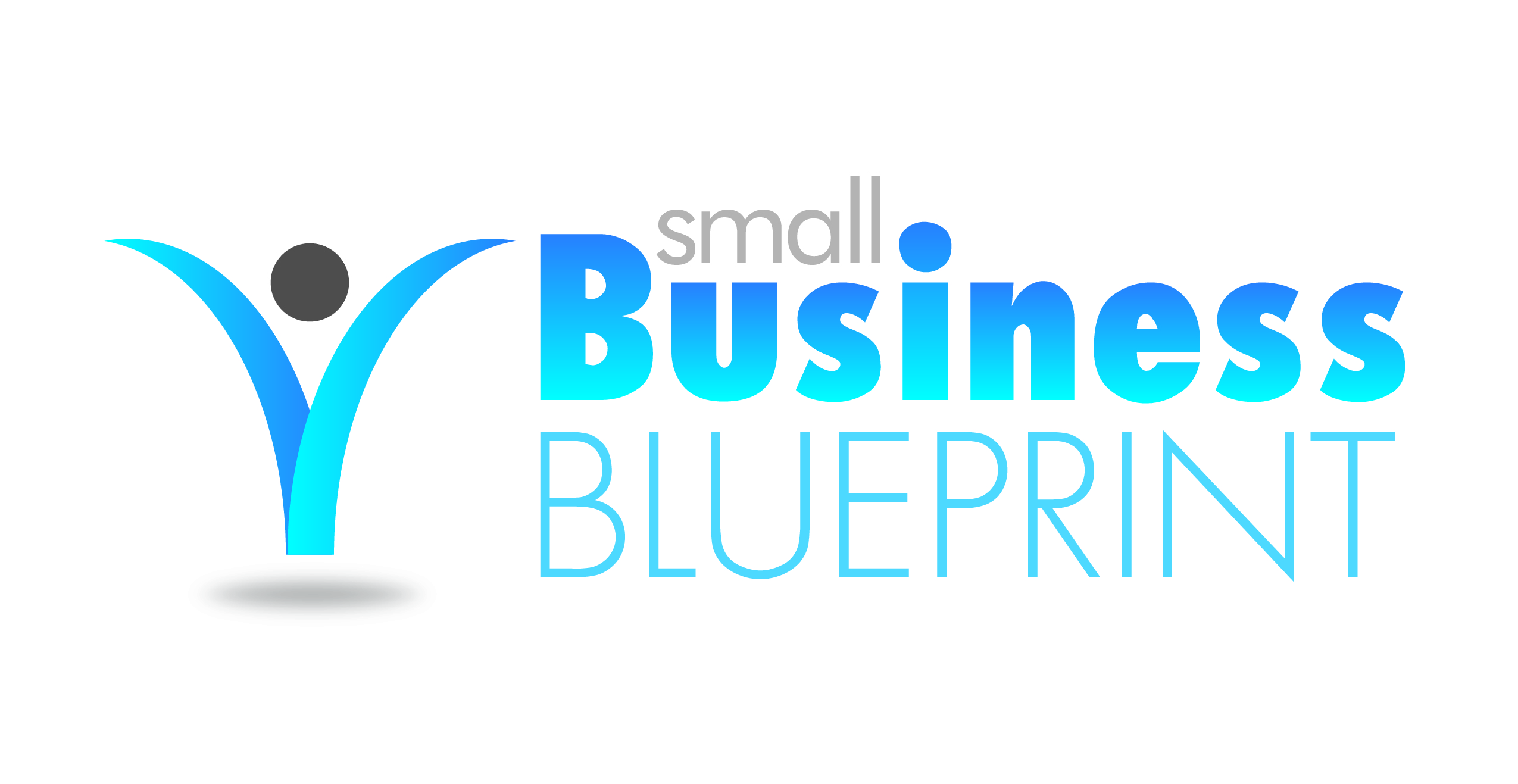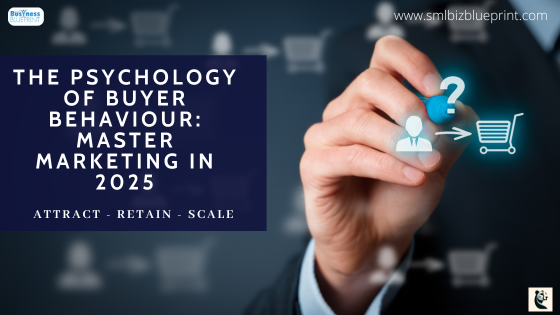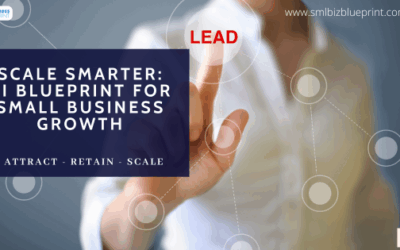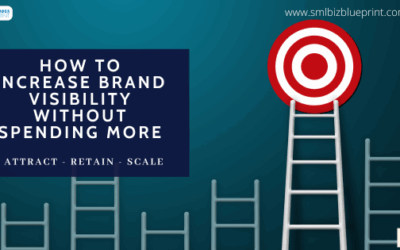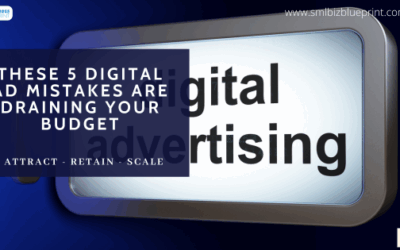In 2025, the world of marketing is evolving at an unprecedented pace.
Businesses face a more complex challenge than ever: understanding the psychology behind buyer behaviour in a digital-first era. With consumers bombarded by endless choices and messages, capturing attention and inspiring action demands a deeper connection with your audience.
Does this sound familiar?
You’ve crafted a campaign you believed was perfect, but the engagement fell flat. Or perhaps you’ve noticed that personalisation and emotional appeals seem to drive results for competitors, but you’re unsure how to apply these strategies effectively.
Here’s the truth: the key to successful marketing lies in understanding how your customers think, feel, and act—and tailoring your strategies to meet them where they are.
From leveraging psychological triggers like urgency and social proof to embracing cutting-edge tools like AI for consumer behaviour analysis, there are proven methods that can elevate your marketing from unnoticed to unforgettable.
This post will explore the psychology of buyer behaviour, uncovering actionable insights to help you:
Understand consumer behaviour trends shaping 2025.
Tap into psychological triggers that drive purchasing decisions.
Leverage personalisation, AI, and storytelling to create campaigns that resonate deeply.
If you’ve been searching for ways to connect with your audience on a more meaningful level and drive consistent results, this guide is your roadmap to success.
Let’s dive into the mindset of today’s buyers and uncover the strategies you need to tailor your marketing for 2025.
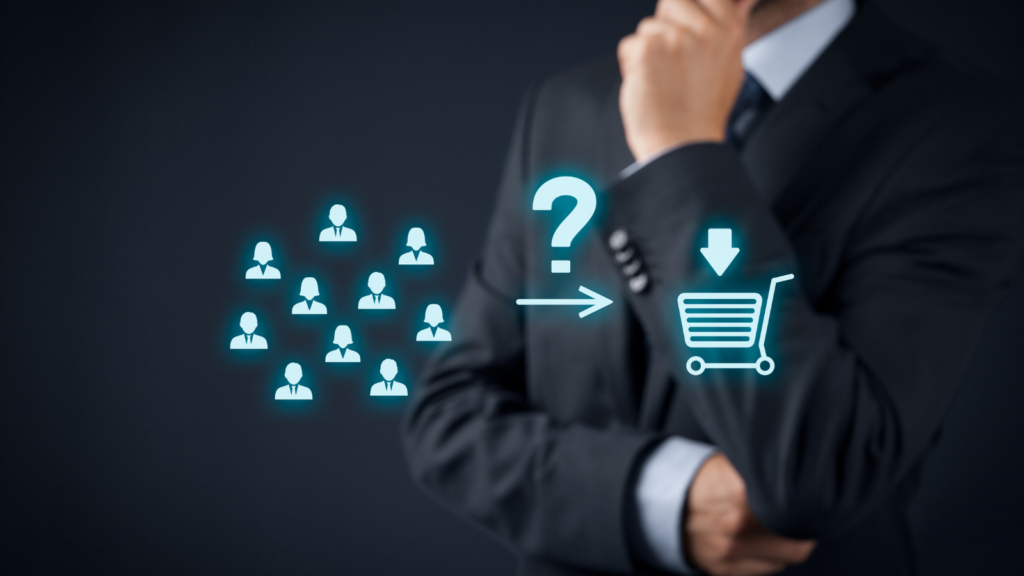
#1 Understanding Consumer Behavior Trends in 2025
In the rapidly evolving landscape of 2025, consumer behaviour is being shaped by a combination of technological advancements, social shifts, and economic factors. To stay ahead, businesses must deeply understand how buyers think and what influences their purchasing decisions.
Let’s explore the trends redefining how people interact with brands today.
Key Trends in Consumer Behaviour
Rise of the Digital-First Consumer
Modern consumers expect seamless online experiences, from discovery to purchase. The surge in mobile commerce (m-commerce) means your audience is likely browsing, comparing, and purchasing directly from their smartphones. Speed and simplicity are paramount.
Example: 72% of e-commerce sales will come from mobile devices by 2025 (Statista).
Personalisation as a Priority
Generic marketing messages are no longer effective. Today’s buyers crave tailored experiences that cater to their unique preferences and needs. Businesses that fail to deliver personalisation risk losing relevance.
Example: 76% of consumers are likelier to consider brands offering personalized interactions (Salesforce).
Ethical and Sustainable Consumerism
Increasingly, buyers prioritise brands that align with their values, particularly those focused on sustainability and ethical practices. Businesses need to showcase authenticity and commitment to causes their audience cares about.
Example: Over 70% of consumers are willing to pay more for sustainable products (Nielsen).
Influence of Social Media and Peer Recommendations
Social proof remains a dominant factor in decision-making. Consumers are heavily influenced by reviews, testimonials, and what their social circles endorse. Platforms like Instagram and TikTok are shaping purchase trends with influencer-led campaigns.
Example: 92% of consumers trust peer recommendations over branded content (Nielsen).
Why These Trends Matter
These trends highlight the importance of meeting consumers where they are. A digital-first approach, combined with authentic and personalised messaging, builds trust and enhances engagement.
By understanding these behaviours, businesses can create more impactful strategies that resonate with their target audience.
Tips
- Optimise for Mobile
Ensure your website is fully responsive and mobile-friendly. Simplify navigation and checkout processes to cater to mobile users. Tools like Google’s Mobile-Friendly Test can help you assess your site’s usability. - Leverage Personalization Tools
Use AI-driven platforms to analyse customer data and deliver personalised experiences. Examples include dynamic email content, AI-powered product recommendations, and predictive analytics for segmentation. - Highlight Your Values
Showcase your commitment to sustainability or ethical practices on your website and social media. Use real examples or certifications to build trust with your audience.
By aligning your marketing strategies with these trends, you can connect with today’s consumers on a deeper level, positioning your brand as forward-thinking and customer-centric.
#2 Top Psychological Triggers Driving Buyer Decisions
Understanding and leveraging psychological triggers can be a game-changer for marketers when it comes to influencing purchasing decisions. These triggers tap into the subconscious mind, driving emotional responses that lead to action.
In 2025, using these triggers effectively is critical to crafting campaigns that resonate with your audience.
Key Psychological Triggers
Fear of Missing Out (FOMO)
FOMO is one of the most powerful motivators in marketing. Creating urgency encourages buyers to act quickly, whether it’s a limited-time offer or a “last five items remaining” alert.
Example: Countdown timers on e-commerce sites have been shown to increase conversion rates by 33% (HubSpot).
Reward Anticipation
People are naturally drawn to experiences or products that promise rewards. Promotions like “Buy One, Get One Free” or loyalty points play into this desire for gratification.
Example: 80% of customers are more likely to shop where they can earn rewards (Forbes).
Social Proof
Buyers trust the opinions of others, making reviews, testimonials, and influencer endorsements critical in building credibility. Seeing others positively engage with your brand reinforces confidence in their purchasing decisions.
Example: 92% of consumers trust recommendations from peers over advertising (Nielsen).
Scarcity
The scarcity principle operates on the idea that limited availability enhances perceived value. Highlighting exclusivity or limited stock can drive urgency and desire.
Example: Amazon’s “Only 3 left in stock!” messaging boosts product sales significantly.
Belonging and Community
People want to feel part of something bigger. Brands that foster a sense of belonging through shared values, community events, or customer interaction foster loyalty and deeper connections.
Example: Harley-Davidson’s customer clubs build a strong sense of identity among buyers.
Why Psychological Triggers Matter
These triggers aren’t manipulative; they align with natural human instincts and decision-making processes. By integrating them thoughtfully, you can create marketing strategies that drive conversions and enhance customer experience.
Tips
- Incorporate Urgency in Your Campaigns
Use time-sensitive offers or countdowns to create a sense of immediacy. For instance, “Flash Sale: 24 Hours Only!” or “Claim your discount before midnight.” - Highlight Social Proof Everywhere
Include customer testimonials, reviews, and case studies on landing pages. Show real examples of how your product or service has helped others. - Offer Rewards or Incentives
Introduce loyalty programs or discounts for repeat purchases. Even small incentives, such as free shipping or a bonus gift, can activate reward anticipation.
By strategically employing psychological triggers, you can tap into the emotional and cognitive factors influencing buyer behaviour, ensuring your marketing efforts are practical and impactful.
#3 How Personalization Impacts Consumer Engagement
Personalisation is no longer optional in today’s competitive marketplace—it’s expected.
Consumers want to feel that brands understand their needs, preferences, and unique journeys. Personalisation not only enhances engagement but also builds trust and fosters long-term loyalty.
Let’s explore why personalised marketing is so powerful and how it can transform your strategies in 2025.
The Power of Personalization
Tailored Experiences Drive Engagement
Personalisation creates relevance. Consumers are more likely to engage, purchase, and become loyal customers when they see content or offers tailored to their interests.
Example: Netflix’s recommendation algorithm accounts for over 80% of streamed content, keeping users hooked.
Higher Conversion Rates
Personalised marketing improves the chances of turning casual visitors into paying customers. Targeted messages align more closely with the buyer’s intent and stage in the decision-making process.
Example: Personalized email campaigns have an average open rate of 29.4%, compared to 18.8% for non-personalized campaigns (Campaign Monitor).
Improved Customer Retention
When brands make consumers feel seen and valued, retention rates soar. Recognising past purchases, preferences, or birthdays creates a sense of connection.
Example: 44% of consumers say they’re likely to return to a business that offers a personalised shopping experience (Accenture).
How Personalization Works
Dynamic Content
Dynamic websites and emails adapt in real-time to the user’s preferences, past behaviours, or geographic location. This ensures every interaction feels unique.
Data-Driven Insights
AI and machine learning enable businesses to collect, analyse, and act on data more efficiently. These technologies uncover patterns in customer behaviour that can inform more precise targeting.
Segmented Campaigns
Divide your audience into smaller, more specific groups based on demographics, behaviour, or preferences. Target each group with messaging that speaks directly to their needs.
Why Personalization Matters in 2025
Consumers are inundated with generic ads and messaging every day. Personalisation cuts through the noise by making your brand more relevant and relatable. As technology evolves, hyper-personalization powered by AI will become even more critical in capturing attention and driving results.
Tips
Use Behavioral Data for Recommendations
Track customer interactions (e.g., browsing history or abandoned carts) and provide personalised product recommendations. For example, “You might like this” sections on e-commerce sites.
Segment Your Email Lists
Group your audience based on key characteristics, such as purchase history or location, and send tailored emails. For instance, a fitness brand could send workout gear suggestions to active users and recovery supplements to beginners.
Leverage AI Tools for Automation
Invest in AI-driven platforms like chatbots and CRM systems to analyse customer data and automate personalised interactions. For instance, a chatbot can recommend specific products based on a customer’s past inquiries.
Integrating personalisation into your marketing strategies can create more meaningful connections with your audience, boosting engagement, loyalty, and long-term success.
Want more insights like this?
Join our newsletter for exclusive tips, strategies, and updates straight to your inbox!
Sign Up Now
#4 Leveraging Neuromarketing to Optimize Campaigns
Neuromarketing is the intersection of neuroscience and marketing, offering insights into how consumers’ brains respond to marketing stimuli.
By understanding subconscious responses, businesses can craft campaigns that resonate on a deeper level, driving higher engagement and conversions.
Let’s explore the role of neuromarketing in shaping effective strategies for 2025.
What is Neuromarketing?
Neuromarketing uses tools like eye-tracking, brainwave monitoring, and emotional analytics to understand how consumers perceive and react to marketing materials. It goes beyond traditional research methods, focusing on subconscious decision-making factors.
Key Neuromarketing Principles
Visual Cues Drive Attention
The human brain processes visuals 60,000 times faster than text, making imagery powerful. Colors, faces, and motion capture attention and elicit emotional responses.
Example: Red stimulates urgency (great for sales), while blue evokes trust (ideal for financial services).
The Power of Emotion
Emotional appeals are more likely to drive action than logic. Campaigns that evoke joy, nostalgia, or even fear tend to leave lasting impressions.
Example: Emotional campaigns by brands like Coca-Cola (“Share a Coke”) have shown how personal connections boost engagement.
Decision Simplification
Consumers are overwhelmed by choices. Simplifying decision-making through clear, concise messaging and prominent CTAs (call-to-actions) reduces cognitive load.
Example: Apple’s minimalistic design and messaging make their products feel intuitive and easy to adopt.
Storytelling Engages the Brain
Stories activate multiple areas of the brain, making information more memorable. Narratives that connect emotionally help consumers visualise themselves using your product or service.
Applications of Neuromarketing in Campaigns
Eye-Tracking: Identify which elements of an ad draw the most attention to optimise layouts and visual hierarchies.
Facial Expression Analysis: Gauge emotional reactions to video ads, identifying moments that evoke excitement or disengagement.
A/B Testing with Emotional Data: Test multiple versions of content to determine which resonates most emotionally with your audience.
Why Neuromarketing Matters in 2025
Consumers are constantly bombarded with ads, making capturing attention more challenging than ever. Neuromarketing provides a scientific way to cut through the noise, ensuring your campaigns connect with audiences on an emotional and subconscious level.
Practical Tips to Apply Neuromarketing
Use Colours Strategically
Incorporate colours that evoke the desired emotional response in your ads and branding. For example, green for eco-friendliness, red for urgency, or yellow for optimism.
Focus on Faces
Ads that feature people’s faces, especially with direct eye contact, grab attention and build trust. Use expressions that align with the emotion you want to convey.
Keep Your Messaging Simple
Avoid overwhelming consumers with too much information. Use clear CTAs and highlight the most essential benefits to reduce decision fatigue.
By leveraging neuromarketing principles, you can create campaigns that don’t just capture attention but also leave a lasting impact, driving emotional connections and higher conversions.
#5 The Role of Social Proof and Scarcity in Buyer Psychology
Social proof and scarcity are two of the most influential psychological principles in marketing. Both tap into deep-rooted human instincts—our tendency to follow the actions of others and our fear of missing out.
These strategies can significantly boost trust, urgency, and conversions when used effectively.
What is Social Proof?
Social proof is the concept that people look to the actions and opinions of others to guide their own decisions. This principle is potent in marketing because it helps overcome doubts and builds credibility.
Example: A product with hundreds of positive reviews appears more trustworthy than one without feedback.
Real-World Insight: 92% of consumers trust peer recommendations over traditional advertising (Nielsen).
Forms of Social Proof:
Reviews and Testimonials: Display customer feedback on product pages and marketing materials.
Influencer Endorsements: Collaborate with industry influencers to promote your products.
User-Generated Content (UGC): Encourage customers to share photos or videos using your products, showcasing authentic experiences.
Popularity Metrics: Use phrases like “500,000 customers served” or “Trending Now” to emphasise wide usage or demand.
What is Scarcity?
Scarcity leverages the idea that people place more value on items that are limited in availability. Creating urgency around your products or services encourages buyers to act quickly.
Example: Amazon’s “Only 3 left in stock” alerts often lead to impulse purchases.
Real-World Insight: Highlighting scarcity has increased sales by up to 33% (HubSpot).
Ways to Use Scarcity:
Limited-Time Offers: Run sales with clear deadlines to drive urgency.
Exclusive Products: Offer items in limited quantities to create a sense of exclusivity.
Countdown Timers: Include timers on your website or in emails to remind customers of expiring deals.
How Social Proof and Scarcity Work Together
When combined, these principles become even more powerful. For example, showing customer testimonials alongside a “limited stock” alert creates credibility and urgency, motivating buyers to act quickly.
Scenario: Displaying “Over 1,000 happy customers” next to “Only five units left” ensures trust and a fear of missing out.
Tips
- Showcase User Experiences
Feature reviews, testimonials, and UGC prominently on your product pages and social media. For example, add a “What Our Customers Say” section with a mix of text and video testimonials. - Use Time-Sensitive Campaigns
Run flash sales or one-day discounts to create urgency. Promote these offers with countdown timers to remind customers of the limited window to act. - Highlight Product Demand
Use scarcity messaging like “Only 5 items left” or “High demand—order now!” on product pages. Ensure accuracy to maintain trust and authenticity.
By integrating social proof and scarcity into your marketing strategies, you can effectively tap into buyer psychology, driving trust, urgency, and higher conversions. These tactics boost sales and strengthen your brand’s credibility and appeal.
#6 AI in Consumer Behaviour Analysis
Artificial intelligence (AI) has revolutionised how businesses analyse and understand consumer behaviour. By leveraging vast amounts of data, AI provides insights into what drives customer decisions, enabling marketers to create hyper-targeted and highly effective campaigns.
In 2025, embracing AI isn’t just an advantage—it’s a necessity.
How AI Transforms Consumer Behaviour Analysis
Predictive Analytics
AI-powered predictive analytics tools analyse past behaviours to forecast future actions. This allows businesses to anticipate needs and offer solutions proactively.
Example: E-commerce platforms using AI can recommend products based on browsing history, increasing the likelihood of a purchase.
Sentiment Analysis
AI can assess customer sentiments by analysing social media comments, reviews, and survey responses. This helps businesses gauge how their audience feels about their brand or products.
Example: A clothing retailer can identify trending opinions about new designs and adjust its offerings accordingly.
Real-Time Personalization
AI enables marketers to deliver personalised content and offers in real time, enhancing the customer experience. From targeted ads to dynamic pricing, AI ensures every interaction feels relevant.
Example: Streaming services like Netflix and Spotify use AI to suggest content that aligns with individual preferences.
Behavioural Segmentation
AI goes beyond traditional demographics by grouping consumers based on their behaviours, such as purchase frequency, cart abandonment, or preferred communication channels.
Benefits of Using AI for Consumer Behavior Analysis
Deeper Insights: AI uncovers patterns and trends that might be invisible through manual analysis.
Efficiency: Automating data collection and analysis saves time and resources.
Precision: AI ensures campaigns reach the right audience with the right message, minimising wasted ad spend.
How Businesses Are Applying AI
Chatbots for Customer Interaction
AI-driven chatbots answer queries, make recommendations, and guide customers through the buying process. They provide a seamless experience while collecting valuable data.
Example: Sephora’s chatbot assists users in selecting makeup products based on their preferences.
Dynamic Email Marketing
AI customises email content, subject lines, and send times based on user behaviour, increasing open and conversion rates.
Example: An AI-driven campaign might recommend a previously viewed item with a discount to encourage purchase.
Social Media Listening
AI tools monitor and analyse social media platforms to identify trends and customer sentiments in real-time.
Tips
- Start Small with Chatbots
Implement AI-powered chatbots to handle customer inquiries and provide tailored recommendations. This improves customer service and collects valuable insights about user preferences. - Use AI for Personalization
Invest in AI-driven tools to create personalised experiences, such as dynamic product recommendations or custom email campaigns. Tools like Salesforce Einstein or HubSpot can help you get started. - Leverage Predictive Analytics
Adopt predictive analytics platforms to analyse historical data and anticipate customer needs. For example, use these insights to craft targeted promotions or identify churn risks.
By leveraging AI for consumer behaviour analysis, businesses can make data-driven decisions, enhance customer experiences, and stay ahead of competitors. In 2025, the brands that effectively harness AI’s potential will be the ones that thrive.
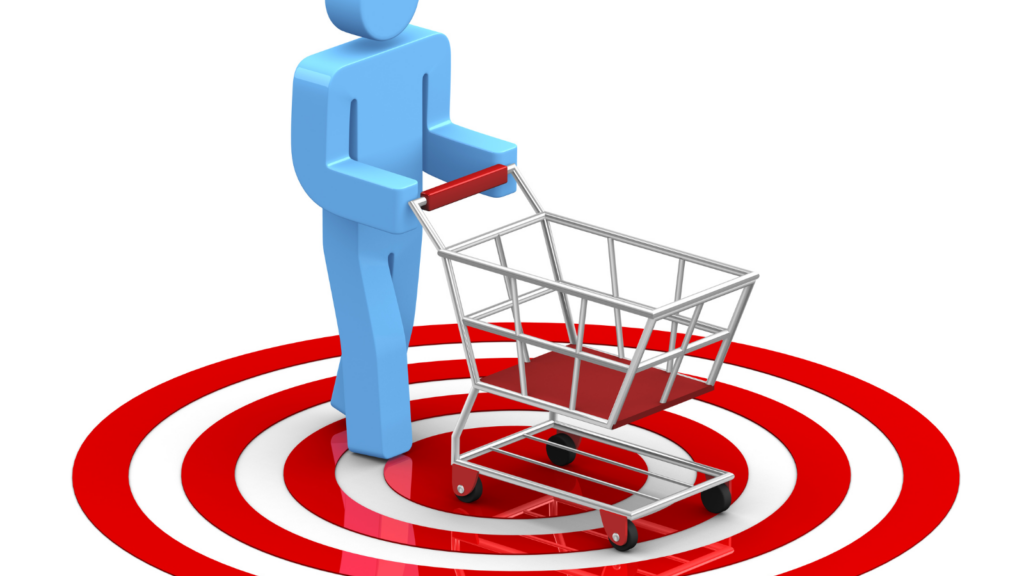
#7 Cognitive Biases That Influence Buying Decisions
Cognitive biases are mental shortcuts or tendencies that influence how people perceive, judge, and decide. They often operate subconsciously, but their impact on purchasing behaviour is profound.
By understanding these biases, marketers can craft strategies that align with how customers naturally think and make decisions.
Key Cognitive Biases in Consumer Behaviour
Anchoring Bias
Consumers rely heavily on the first piece of information they see—known as the anchor—when making decisions. This can influence how they perceive value or compare options.
Example: Showing a “before” price of $200 and a “discounted” price of $120 makes the latter appear like a great deal, even if the product’s true value is closer to $120.
Loss Aversion
People tend to fear losses more than they desire gains. Highlighting what customers stand to lose if they don’t act is often more effective than focusing solely on potential benefits.
Example: “Don’t miss out on this exclusive offer—expires today!”
Social Proof
Buyers look to others for guidance, especially in uncertain situations. Reviews, testimonials, and customer success stories tap into this bias.
Example: Displaying “80% of our customers chose this option” can nudge people toward a particular choice.
Scarcity Effect
Limited availability increases perceived value. When people believe something is rare, they’re more likely to act quickly to avoid missing out.
Example: “Only three items left in stock!” triggers urgency and action.
Confirmation Bias
Consumers seek information that reinforces their existing beliefs. Crafting messaging that aligns with their values or expectations can build trust and increase conversions.
Example: Eco-conscious consumers respond better to ads highlighting sustainability efforts.
How Cognitive Biases Shape Decisions
Cognitive biases simplify decision-making in a world full of choices. When marketers understand these tendencies, they can design campaigns that guide consumers naturally and effectively through the purchasing process.
Examples of Cognitive Biases in Action
Amazon: Uses anchoring by showing original prices next to discounted ones, creating perceived value.
Booking.com: Combines scarcity (“Only 1 room left!”) with social proof (“20 people are viewing this property”) to drive bookings.
Apple: Leverages social proof by showcasing user-generated content from iPhone users to highlight popularity.
Tips
- Use Anchoring in Pricing
Always show a reference price next to discounts to highlight value. For example, list the original cost next to a discounted sale price to emphasise savings. - Frame Offers Around Loss Aversion
Highlight what customers risk losing by not taking action. Use language like, “Lock in your savings today before prices go up!” - Incorporate Social Proof
Add testimonials, product ratings, and real-time purchase notifications to your website. For example, “Sarah from Melbourne just bought this product!”
By leveraging cognitive biases thoughtfully, you can create marketing campaigns that resonate deeply with your audience’s subconscious decision-making processes, driving higher engagement and conversions.
#8 Building Trust and Transparency in Digital Marketing
Trust has become the cornerstone of effective marketing in a world where consumers are constantly exposed to advertising.
Today’s buyers are more discerning than ever, expecting transparency, authenticity, and reliability from brands. Building trust isn’t just a marketing tactic—it’s a long-term strategy that fosters loyalty and drives repeat business.
Why Trust and Transparency Matter
Consumer Skepticism is Growing
With misinformation and privacy concerns rising, consumers are cautious about who they do business with. Transparent practices help alleviate these fears and build credibility.
Example: Brands like Patagonia openly share details about their supply chains to emphasise ethical sourcing.
Trust Drives Purchase Decisions
People are likelier to buy from companies they trust, especially for higher-value or long-term purchases. Clear policies, honest communication, and consistent experiences foster confidence.
Example: 81% of consumers say trust is a factor in their purchasing decisions (Edelman).
Loyal Customers Advocate for Your Brand
Trusted brands benefit from loyal customers who return and recommend them to others. Word-of-mouth referrals are among the most powerful drivers of new business.
Example: Tesla’s referral program rewards loyal customers for bringing in new buyers, reinforcing trust and advocacy.
How to Build Trust and Transparency
Honest Communication
Clearly outline pricing, product specifications, and terms of service. Avoid hidden fees or misleading claims, as they erode trust.
Customer-Centric Policies
Offer guarantees, hassle-free returns, and responsive customer support. Show that you stand behind your product and prioritise customer satisfaction.
Demonstrate Authenticity
Share your brand’s story, mission, and values. People connect with businesses that align with their beliefs and demonstrate genuine commitment to their promises.
Example: TOMS’ “One for One” model builds trust by showcasing how purchases contribute to social good.
Examples of Brands Excelling in Transparency
Everlane: Known for its “radical transparency,” the company breaks down production costs and explains how it prices products.
Zappos is famous for its exceptional customer service, including a generous return policy prioritising customer happiness.
Tips
- Be Honest About Mistakes
If something goes wrong—such as a shipping delay or product defect—address it openly and proactively. Customers appreciate honesty over excuses. - Share Behind-the-Scenes Content
Show how your products are made or highlight your team’s efforts to deliver quality products. This humanises your brand and builds trust. - Offer Social Proof as Validation
Use testimonials, case studies, and user reviews to reinforce your credibility. For example, display customer success stories prominently on your website.
By focusing on trust and transparency, your brand can create lasting customer relationships, enhance loyalty, and stand out in a competitive market. Trust is hard to earn but invaluable when achieved, making it one of the most powerful tools in your marketing arsenal.
#9 Generational Marketing: Tailoring Strategies for Diverse Audiences
In 2025, the consumer landscape is more diverse than ever, with multiple generations driving market demand.
Each group—Gen Z, Millennials, Gen X, and Baby Boomers—has unique preferences, communication styles, and values. Tailoring your marketing strategies to address these differences is essential to connect with your audience effectively.
Understanding Each Generation
Gen Z (Born 1997–2012)
Key Traits: Tech-savvy, socially conscious, and driven by authenticity.
Marketing Preferences: Gen Z values brands that align with their beliefs, embrace inclusivity, and use platforms like TikTok and Instagram for storytelling.
Example: Nike’s diversity and social issues campaigns resonate strongly with this generation.
Millennials (Born 1981–1996)
Key Traits: Experience-driven, loyal to brands that offer value, and highly engaged online.
Marketing Preferences: Millennials respond well to personalised offers, engaging social media content, and loyalty programs.
Example: Airbnb’s marketing focuses on experiences over products, appealing to Millennials’ desire for travel and adventure.
Gen X (Born 1965–1980)
Key Traits: Independent, family-oriented, and value-driven.
Marketing Preferences: Gen X prefers practical solutions and clear value propositions. They’re more likely to engage with email marketing and Facebook ads.
Example: Financial service providers targeting Gen X often focus on retirement planning and family-oriented benefits.
Baby Boomers (Born 1946–1964)
Key Traits: Brand-loyal, prefer traditional communication methods, and value quality.
Marketing Preferences: Boomers respond well to straightforward messaging, trust-building efforts, and accessible customer service.
Example: Pharmaceutical brands often create clear, informational campaigns tailored to this generation’s health concerns.
How to Tailor Marketing Strategies by Generation
Adjust Communication Channels
Each generation gravitates toward different platforms. While Gen Z dominates TikTok, Millennials and Gen X are more active on Instagram and Facebook. Baby Boomers prefer email and traditional websites.
Align with Generational Values
Gen Z: Emphasize sustainability and social impact.
Millennials: Highlight personalisation and convenience.
Gen X: Offer practical, no-nonsense solutions.
Baby Boomers: Focus on quality and trustworthiness.
Leverage Generational Spending Habits
Younger generations often prefer subscription models and microtransactions, while older groups prioritise big-ticket, long-term investments.
Examples of Generational Marketing in Action
Spotify: Uses AI to create personalised playlists, appealing to Millennials and Gen Z.
AARP: Tailors content and services specifically for Baby Boomers, focusing on retirement planning and lifestyle advice.
Coca-Cola: Uses nostalgia in campaigns to engage Baby Boomers while running vibrant, socially-driven campaigns for Gen Z and Millennials.
Practical Tips to Tailor Strategies for Generations
Create Segmented Campaigns
Use analytics tools to segment your audience by age group and craft tailored messaging for each generation. For example, send email offers to Gen X while creating TikTok challenges for Gen Z.
Speak Their Language
Use generational language and tone to establish connection. For example, use casual, emoji-friendly messaging for Gen Z but formal, concise communication for Baby Boomers.
Highlight Shared Values Across Generations
While differences exist, values like authenticity, transparency, and quality appeal to all generations. Focus on these universal principles to unify your messaging.
By tailoring your marketing strategies to align with the preferences and behaviours of each generation, you can create campaigns that resonate deeply, foster loyalty, and drive meaningful engagement across all age groups.
Stay in the know! Pulse is your go-to resource for the latest trends and proven tactics to grow your business.
Subscribe today!
Get Pulse Here
#10 The Power of Storytelling in Influencing Buyer Behavior
Storytelling is one of the most effective ways to connect with your audience on an emotional level. Humans are wired to respond to narratives—they help us make sense of the world, evoke emotions, and create lasting memories.
In 2025, brands that master the art of storytelling can differentiate themselves and build deeper relationships with their customers.
Why Storytelling Works in Marketing
Creates Emotional Connections
Stories activate multiple areas of the brain, making them more engaging and memorable than facts alone. Emotional appeals within stories help consumers see themselves as part of your brand’s journey.
Example: Dove’s “Real Beauty” campaign used authentic stories to resonate with women, reinforcing its brand values of self-confidence and inclusivity.
Builds Trust and Credibility
Stories that showcase real customer experiences or your brand’s mission make your business more relatable and trustworthy. Consumers feel more connected to brands with a human side.
Example: TOMS’ storytelling around its “One for One” program demonstrates how purchases contribute to global good, reinforcing trust and loyalty.
Simplifies Complex Ideas
Stories break down complex products or services into relatable scenarios, making it easier for consumers to understand their benefits.
Example: Apple’s ads often highlight how their technology fits seamlessly into everyday life, showcasing simplicity and functionality.
Encourages Action
Narratives incorporating a strong call-to-action inspire audiences to take the next step, whether purchasing, subscribing, or engaging further with your brand.
Elements of an Effective Brand Story
A Clear Hero
The customer should be the hero of the story, with your product or service acting as the guide or solution to their challenge.
Emotional Appeal
Highlight struggles, aspirations, or triumphs that your audience can relate to. The more authentic, the stronger the connection.
Authenticity
Use real examples, testimonials, or user-generated content to tell honest and relatable stories.
Examples of Storytelling in Action
Airbnb: Features personal stories from hosts and travellers, showcasing the human connections made through its platform.
Patagonia: Tells compelling stories about environmental activism and sustainability, aligning with its audience’s values.
Nike: Focuses on inspirational stories of athletes overcoming challenges, aligning with its “Just Do It” ethos.
Tips
- Use Customer Testimonials as Stories
Turn positive customer feedback into narratives. Highlight how your product or service solved a problem or enhanced their lives. - Create a Brand Mission Video
Showcase your brand’s purpose and values through a short video that tells your story and resonates with your audience emotionally. - Incorporate Stories Into Social Media
Share behind-the-scenes content, customer highlights, or mini-narratives in Instagram stories, TikTok videos, or LinkedIn posts to humanise your brand.
By integrating storytelling into your marketing efforts, you can capture attention, foster emotional connections, and create a memorable brand identity that resonates with your audience.
In 2025, storytelling isn’t just a marketing tool—it’s the bridge that connects your brand with your customers on a deeper level.
Conclusion
Understanding the psychology of buyer behaviour is the key to unlocking more effective and impactful marketing strategies in 2025.
From leveraging personalisation and storytelling to tapping into psychological triggers like social proof and scarcity, aligning your efforts with how consumers think and act can significantly enhance your results.
As we’ve explored:
- Consumer behaviour trends emphasise personalisation, ethical practices, and seamless digital experiences.
- Psychological triggers such as FOMO, reward anticipation, and emotional appeals drive engagement and conversions.
- AI and neuromarketing provide cutting-edge tools to analyse and influence buyer decisions.
- Building trust through transparency and crafting generationally tailored strategies ensures your brand remains relevant and relatable.
- Storytelling connects with audiences on a deeply emotional level, creating lasting impressions.
Now, it’s your turn to put these insights into action. What steps can you take today to tailor your marketing strategies and connect more meaningfully with your audience?
Ready to transform your marketing? Start by diving deeper into your audience’s psychology and crafting strategies that resonate on a personal level.
Take the first step toward mastering buyer behaviour—because understanding your audience is the key to driving success in today’s competitive landscape.
FAQs
Q1: What is buyer psychology, and why is it important in marketing?
A1: Buyer psychology refers to the study of how consumers think, feel, and behave when making purchasing decisions. It’s crucial in marketing because understanding these behaviours allows businesses to craft strategies that resonate with their audience, increase engagement, and drive conversions.
Q2: How does personalisation impact consumer behaviour?
A2: Personalisation creates a tailored experience for each customer, making them feel valued and understood. By using data to deliver relevant content, recommendations, and offers, businesses can significantly improve engagement, loyalty, and sales.
Q3: What are the most effective psychological triggers in marketing?
A3: Some of the most effective psychological triggers include:
Fear of Missing Out (FOMO): Encourages urgency.
Social Proof: Builds trust through testimonials, reviews, and endorsements.
Scarcity: Increases perceived value by emphasising limited availability.
Reward Anticipation: Motivates purchases through incentives like discounts or loyalty rewards.
Q4: How can storytelling help influence buyer behaviour?
A4: Storytelling appeals to emotions and makes a brand more relatable. By showcasing real experiences, aspirations, and values, storytelling helps create a strong emotional connection, making the brand memorable and fostering trust.
Q5: What role does AI play in understanding consumer behaviour?
A5: AI analyses vast amounts of data to uncover patterns and predict buyer behaviour. Tools like predictive analytics, sentiment analysis, and dynamic personalisation enable businesses to target the right audience with the right message at the right time.
Q6: How can trust and transparency improve marketing outcomes?
A6: Trust and transparency build credibility and foster long-term customer loyalty. By being honest about pricing, product quality, and values, businesses create strong relationships, reduce scepticism, and encourage repeat purchases.
Q7: How can businesses tailor marketing strategies for different generations?
A7: Each generation has unique preferences:
Gen Z: Responds to authenticity and social values, engaging with platforms like TikTok.
Millennials: Prefer personalised offers and value-driven content.
Gen X: Values practicality and clear messaging, often engaging through email or Facebook.
Baby Boomers: Trust straightforward, quality-focused approaches and traditional communication.
Other Articles
How Data-Driven Marketing Drives Small Business Success
The Best AI Solutions to Simplify Work for Small Business Owners
